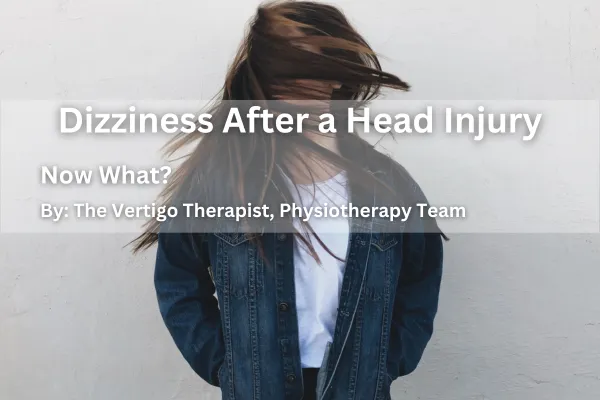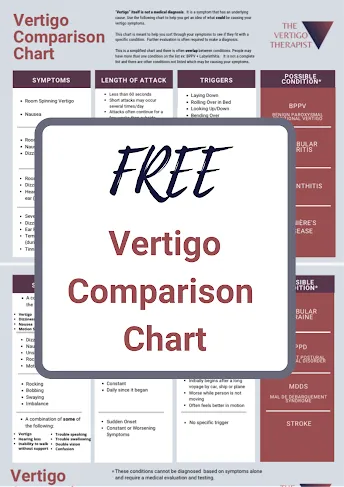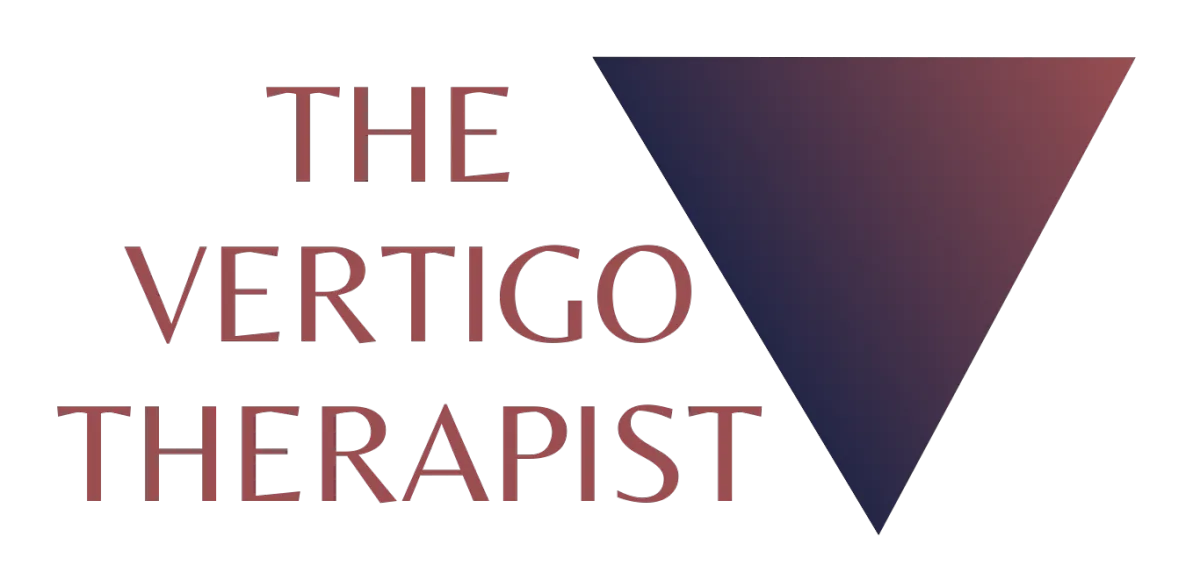Articles + Blog Posts
created by The Vertigo Therapist team.

Dizziness After a Head Injury
“Dizziness after a Head Injury.... Now What?"
What is a concussion (mTBI)?

A concussion is a mild Traumatic Brain Injury (mTBI). It can be caused by a hit to the head or the body. The movement of the brain can create chemical changes in the brain or sometimes stretching or injury to brain cells.
Each concussion is similar to a snowflake, unique as it can present with a variety of symptoms, clinical presentations, and recovery pathways. There are 5 different types of concussions that can occur, and you can experience more than one type at a time.
Created with BioRender.com

Facts about concussion subtypes:
Multiple concussion subtypes MAY occur at the same time, for example: you have mainly vestibular symptoms (dizziness, vertigo, imbalance) and headaches as well
Your concussion subtype MAY change throughout your injury, for example: you may have headache subtype initially and then later in your recovery you may have more symptoms of the ocular-motor subtype
What other issues can you have following a concussion?

Vertigo and Concussion
The vestibular subtype of concussion is often a disruption of the central vestibular system. The central vestibular system includes the brain (cerebrum) and the brainstem. These areas are involved in movement and orientation of the body to space and time.

Created with BioRender.com
Sometimes, in concussion we can get peripheral vestibular dysfunction. Peripheral vestibular dysfunction occurs when the inner ear and the pathways (nerves) to the brainstem are affected, which can also cause vertigo. An example of a peripheral dysfunction is Benign Paroxysmal Positional Vertigo (BPPV). In BPPV, the crystals (otoconia) are displaced in the semicircular canals and trigger positional vertigo.

Vertigo and/or dizziness may also be seen in the vestibular, oculomotor or headache subtypes of concussion. The important part is identifying the root cause or causes of the vertigo and/or dizziness to determine the best treatment(s) for it.
Vertigo, dizziness and/or imbalance are often triggered by movements such as walking, bending, rolling, twisting, etc. These movements require your head, body and vestibular system (inner ear) to work together. If these systems are not working together well it can create dysfunction which causes symptoms. This explains why symptoms can come from so many different subtypes!
Vestibular Therapy and Concussion:
A vestibular physiotherapist will do a thorough virtual telehealth assessment to help you identify your concussion subtype(s). After identifying your subtype(s), your therapist will be able provide you with strategies and exercises to help! A vestibular therapist can help you determine the underlying causes of your post-concussion signs and symptoms.
A vestibular physiotherapist can help choose, teach, and appropriately progress vestibular exercises and education to help with your post-concussion symptoms. These may include:
Balance & walking exercises
Oculomotor exercises
Decrease dizziness &/or motion sensitivity
Strategies to help for return to work &/or sport
Exercises & strategies to help with headaches &/or neck pain
Strategies to help with sleep, fatigue, planning & pacing
The human brain is amazing and is able to change with appropriate exercise and strategies due to neuroplasticity! Neuroplasticity is the ability of nerve connections in the brain to change, grow and reorganize to help the brain heal after a concussion.
It is never too late to get help. If it's 1 week, 1 month or years please reach out to get a better understanding and control of your symptoms following concussion!
Resources:
Bloom, J., Brody, D., Chesnutt, J., Clugston, J., Collins, M., Gioia, G., Kontos, A., Lal, A., Sills, A., & Gharjar, J. (2020). Concussion Guidelines Step 2: Evidence for Subtype Classification. Neurosurgery, 86, 1–13.
Craton, N., Ali, H., & Lenoski, S. (2017). COACH CV: The Seven Clinical Phenotypes of Concussion. Brain Sciences, 7(12), 119. https://doi.org/10.3390/brainsci7090119
Pugh, M. J., Kennedy, E., Prager, E. M., Humpherys, J., Dams-O’Connor, K., Hack, D., McCafferty, M. K., Wolfe, J., Yaffe, K., McCrea, M., Ferguson, A. R., Lancashire, L., Ghajar, J., & Lumba-Brown, A. (2021). Phenotyping the Spectrum of Traumatic Brain Injury: A Review and Pathway to Standardization. Journal of Neurotrauma. Published. https://doi.org/10.1089/neu.2021.0059
Santo, A. L., Race, M. L., & Teel, E. F. (2020). Near Point of Convergence Deficits and Treatment Following Concussion: A Systematic Review. Journal of Sport Rehabilitation, 29(8), 1179–1193. https://doi.org/10.1123/jsr.2019-0428

Vertigo is a symptom, NOT a diagnosis.
FREE VERTIGO COMPARISON CHART
Knowing the true cause of your vertigo is
the KEY to treating it properly.
Download the FREE Vertigo Symptom Comparison Chart
Online OR
1960 Appleby Ln. Suite 25
Burlington, Ontario L7L 0B7
Call 365-440-8614
Email: admin@thevertigotherapist.com

